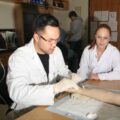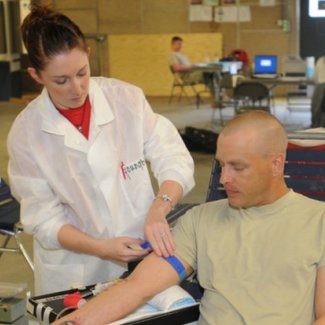
How long does it take to become a LPN? While RNs need at least a 2-year associate’s degree to get a license, LPNs can take vocational courses lasting just a year or less. In general, it takes around 1 to 2 years to master the skills necessary for competency and licensure.
Becoming an LPN
LPN Training and Testing
The Licensed Practical Nurse position is considered the entry level for U.S. nurses. LPNs have less authority than Registered Nurses (RNs) mainly because they have less education. But LPNs do receive formal training, often in the form of a vocational diploma program for practical nurses. After training, students must pass a national test called the National Council Licensing Examination for Practical Nurses (NCLEX-PN). LPN school graduates should be prepared to successfully sit for the NCLEX-PN. They can sign up to take the exam once they have graduated from an LPN program.
To get into a practical nursing program, students may need a high school education, though not everywhere. Most applicants need to be at least 18 years old. Some need to present evidence of their proficiency in English. LPN training programs should be explicitly approved by the state’s Board of Nursing and accredited by the National League for Nursing Accrediting Commission. Most states keep a list of approved vocational nursing education providers.
LPN coursework focuses on the fundamentals of safe and effective medical nursing care. Students learn to analyze medical charts, take patient vital signs, draw blood and collect specimens for lab testing, and administer shots. They are taught nursing fundamentals such as first aid, anatomy and physiology, and human nutrition. Most get an introduction to pharmacology, too. Some LPN classes focus on the technicalities of health care delivery; others focus on patient relations. The best programs also have clinical opportunities built into the curriculum.
State Licensure
After graduating from an approved program, students need to obtain a license from the state in which they intend to practice as an LPN. Program graduates will need to submit an application, application fee, and school transcripts. Some LPNs need to pass a background check and submit their fingerprints to the state.
Licensure applicants need to have sufficient training as determined by their state’s Board of Nursing. Additionally, before applicants can be issued a license to practice, they may need to fulfill add-on requirements, like proof of CPR certification or successful completion of board-approved coursework on, for example, bioterrorism, professional ethics or local regulations. Once LVNs obtain their license, most are responsible for accumulating a state-specified number of continuing education credits or 50-minute ‘contact’ hours on a cyclical basis. These are used to renew licensure every 2 to 4 years.












Leave a Reply